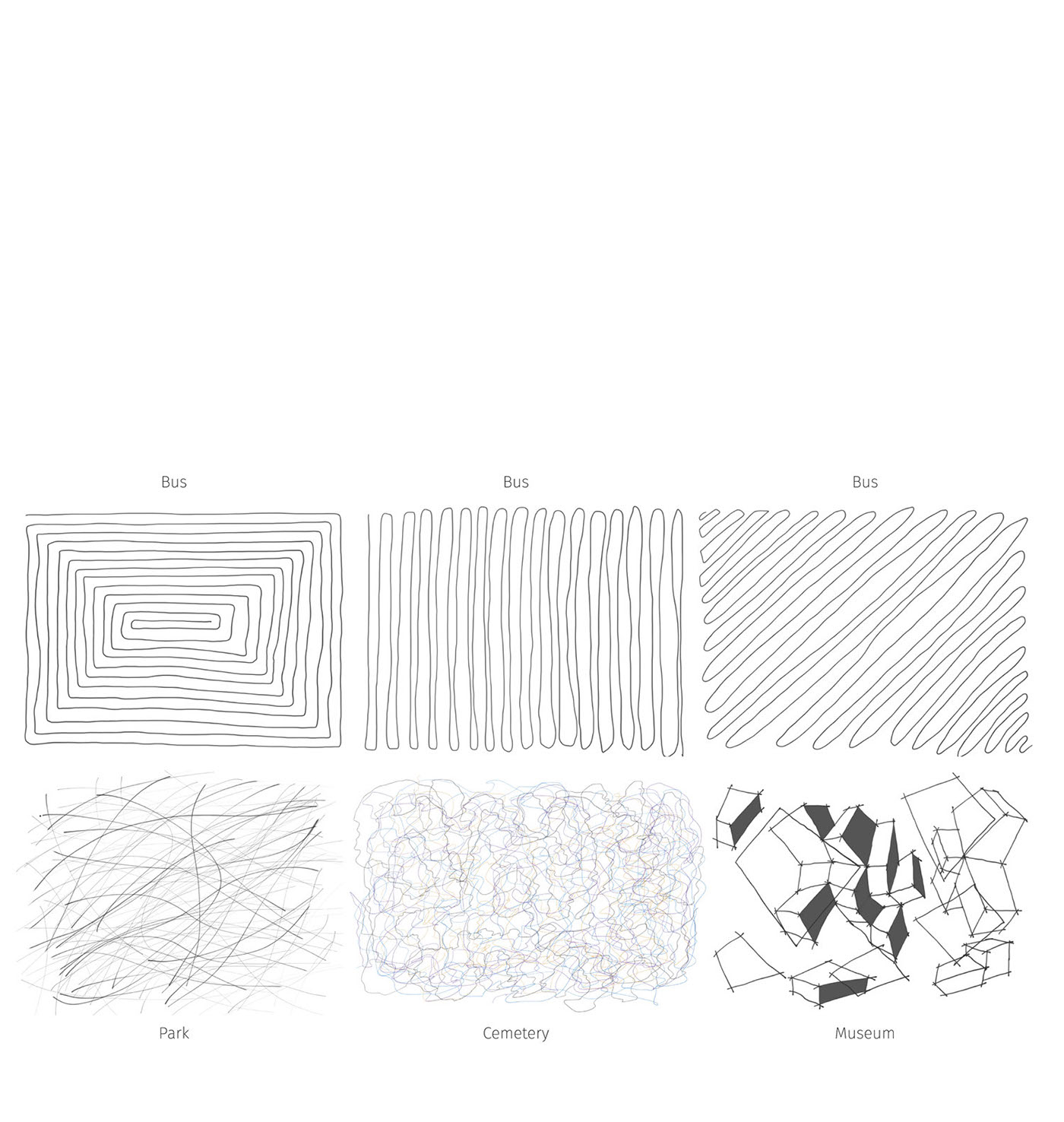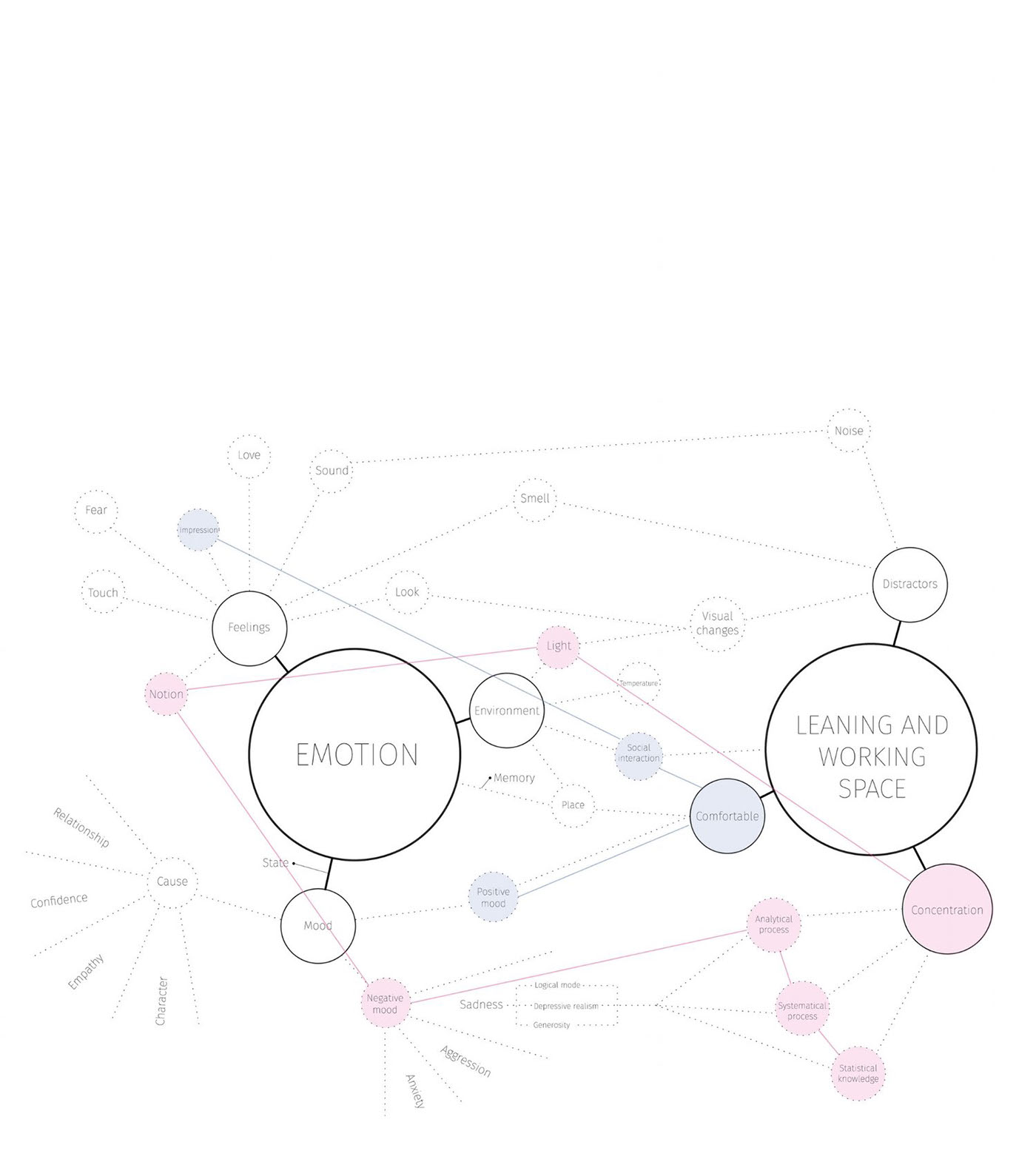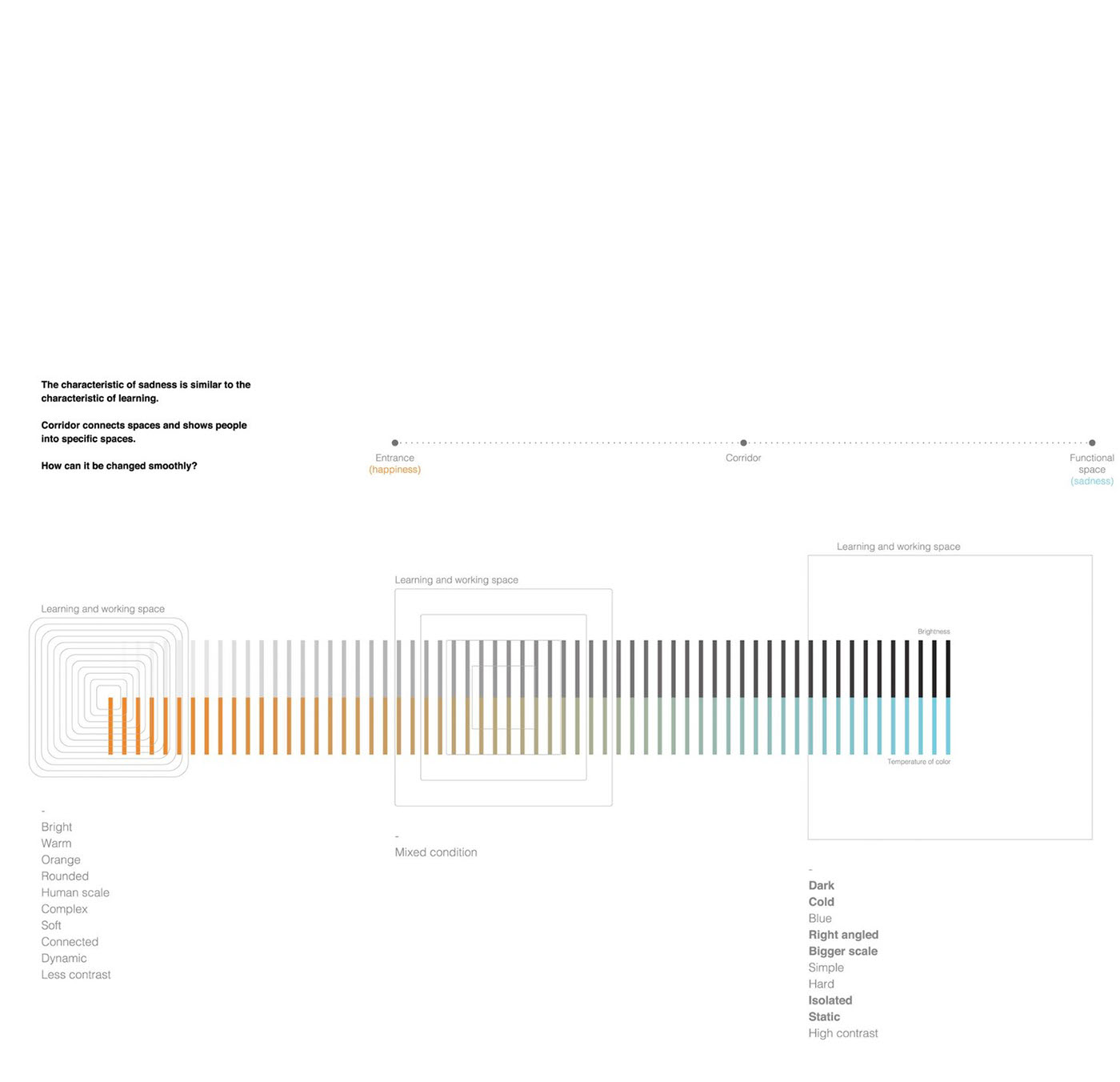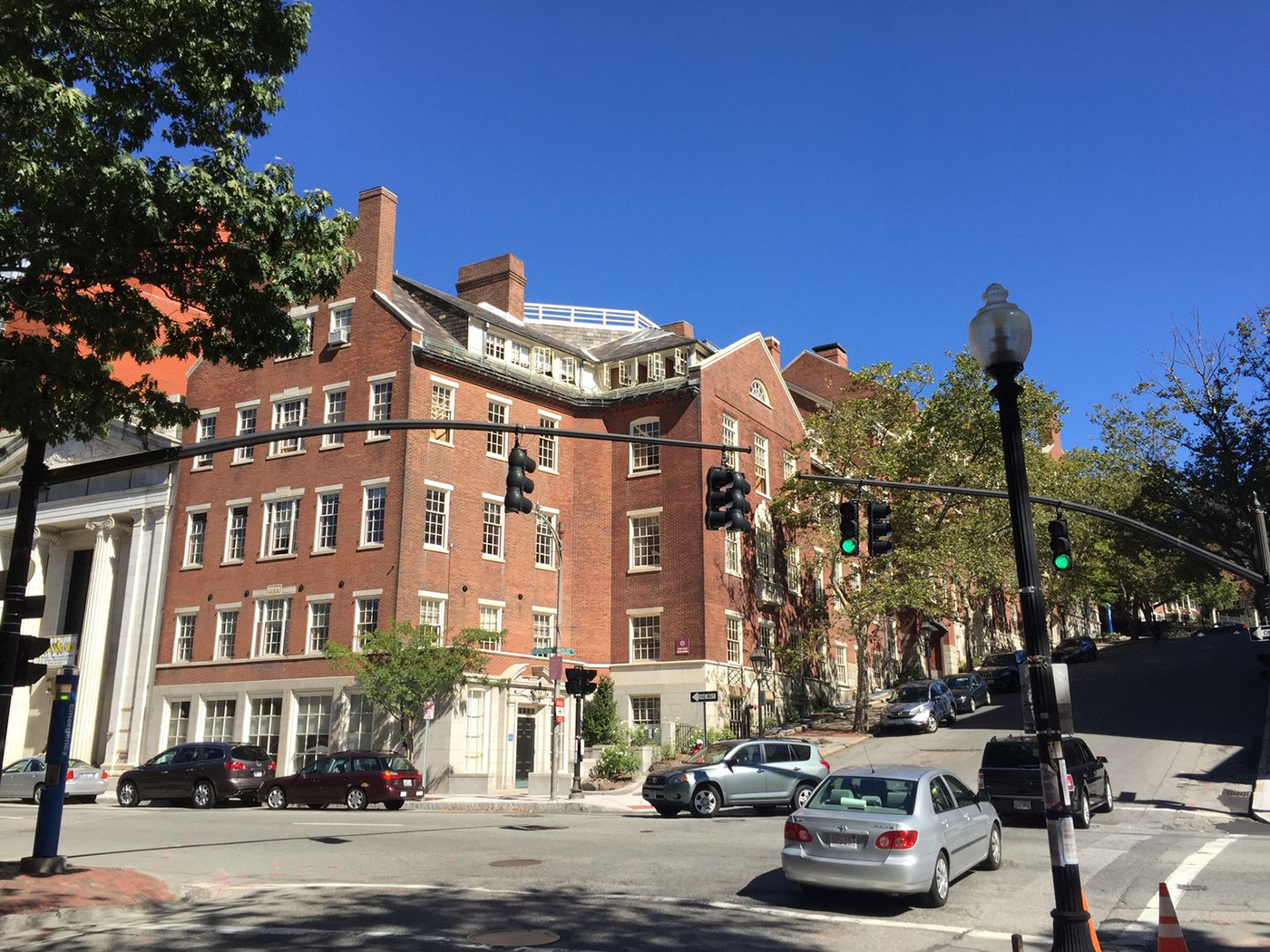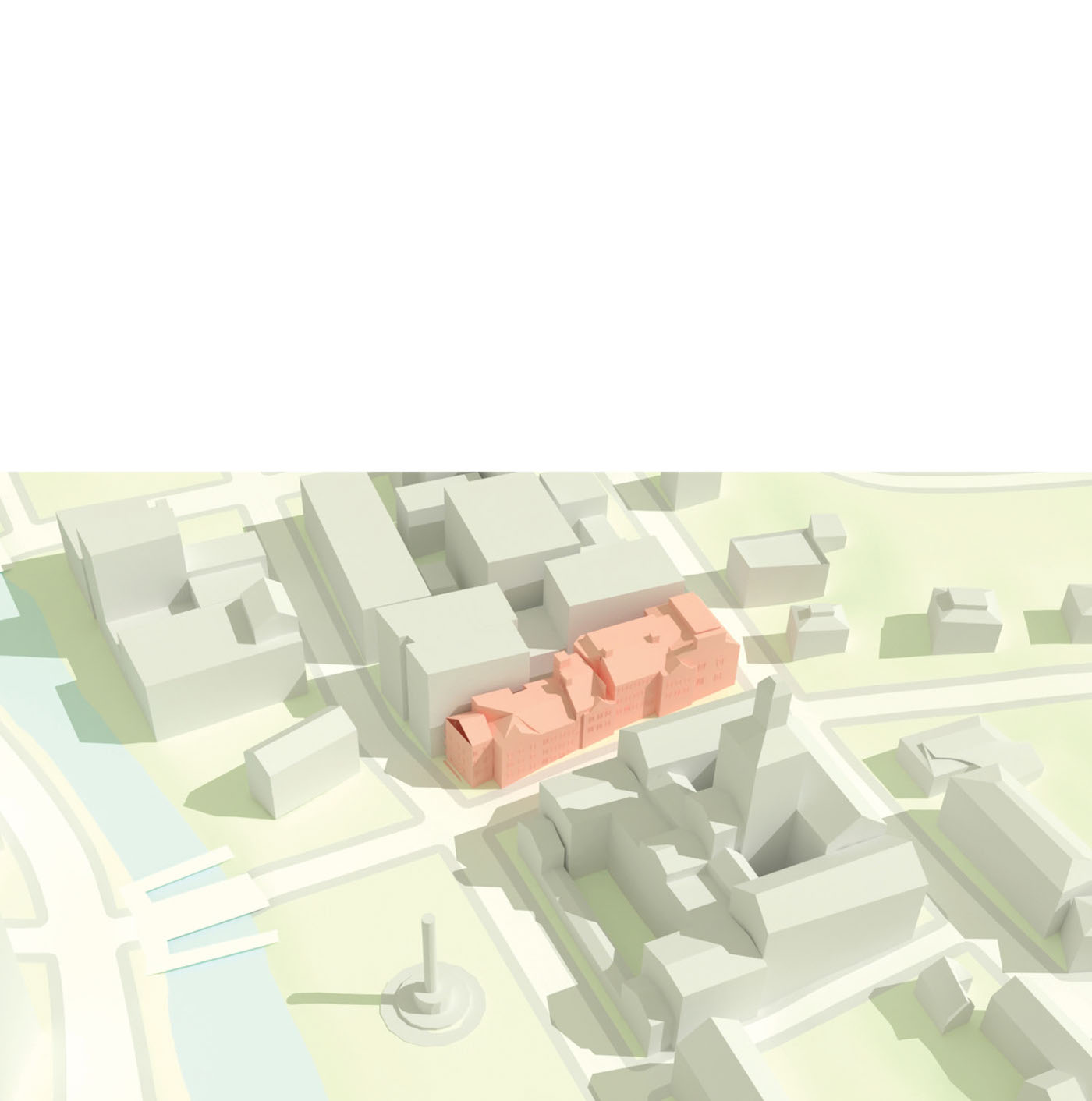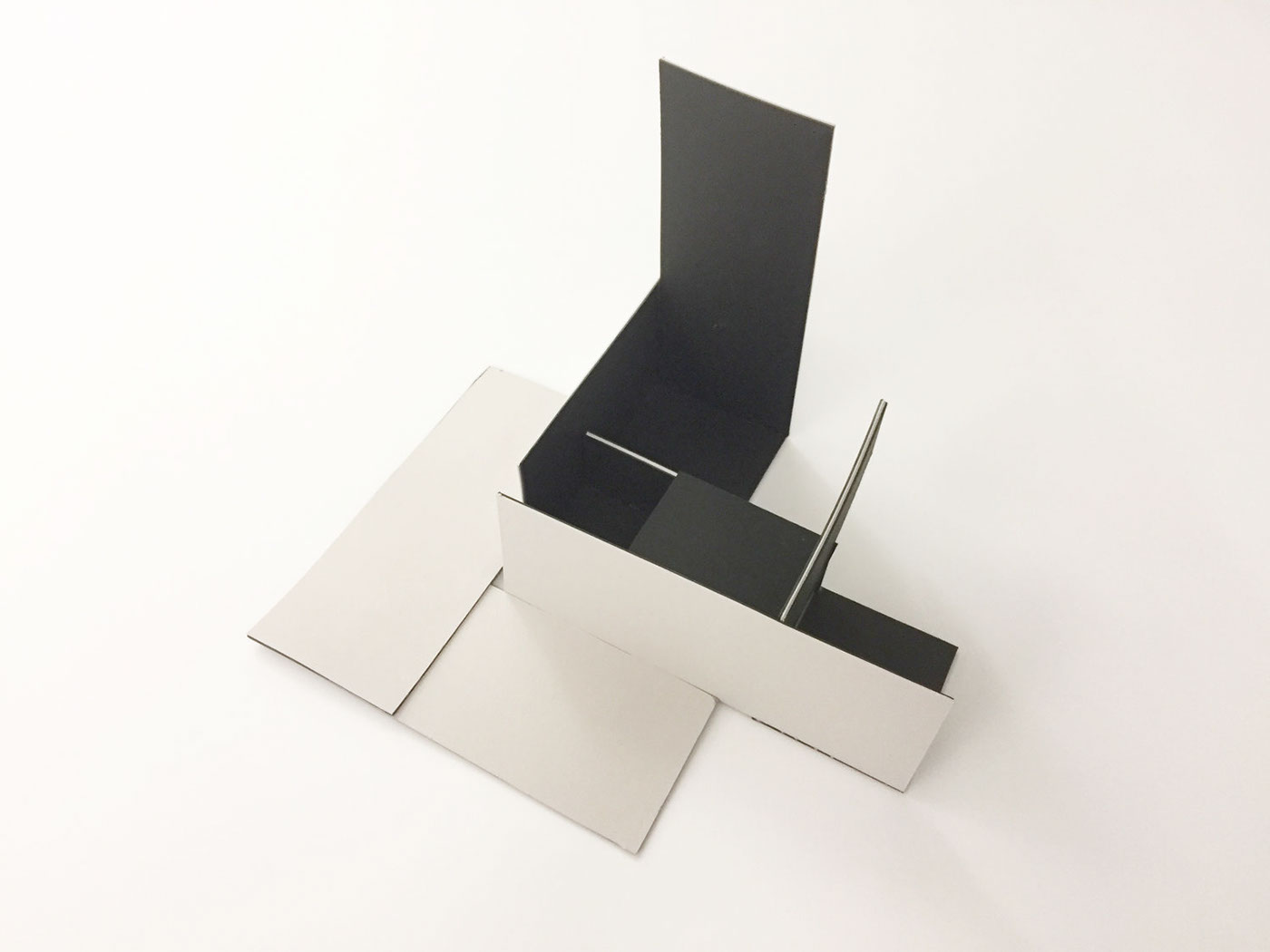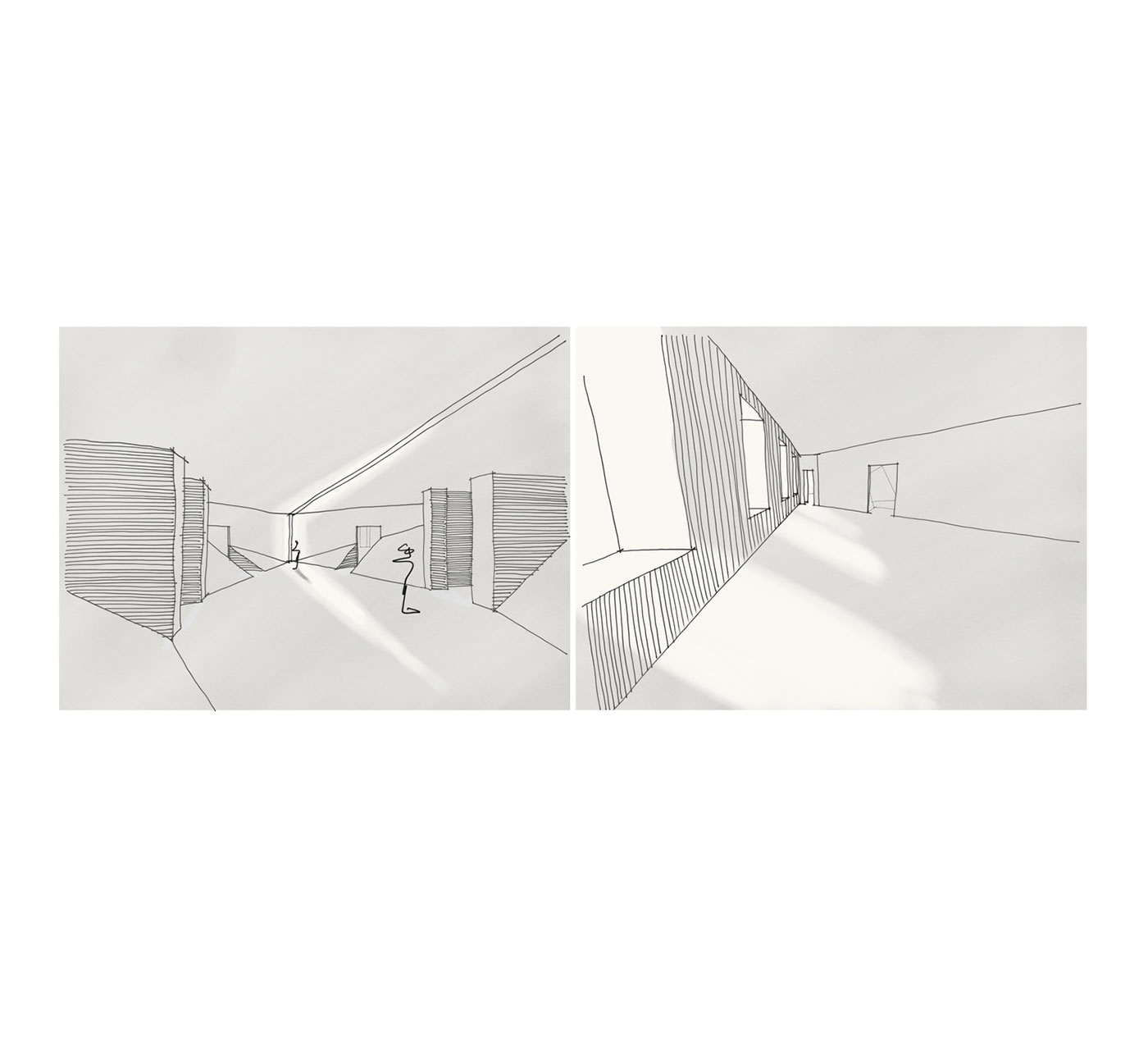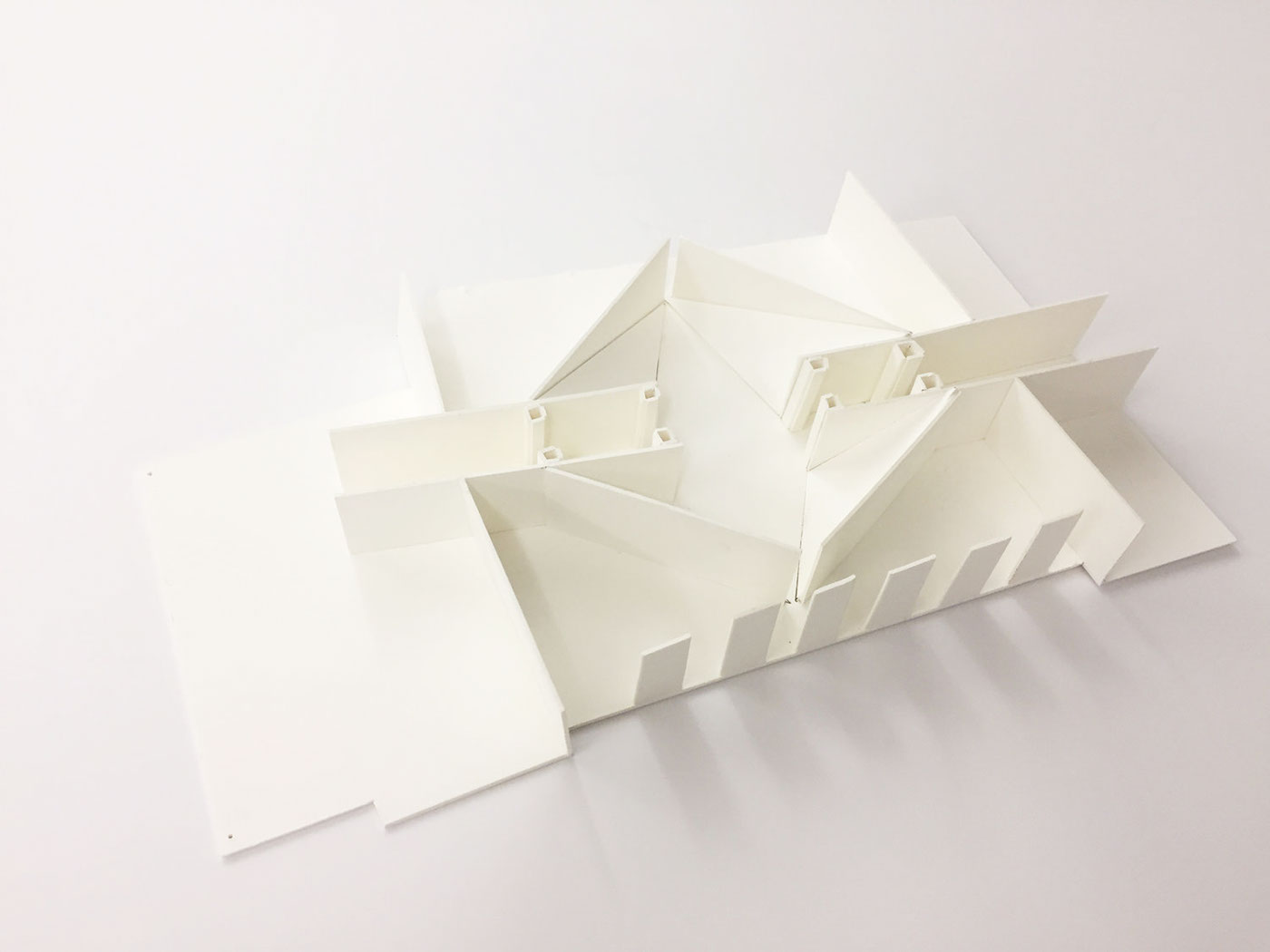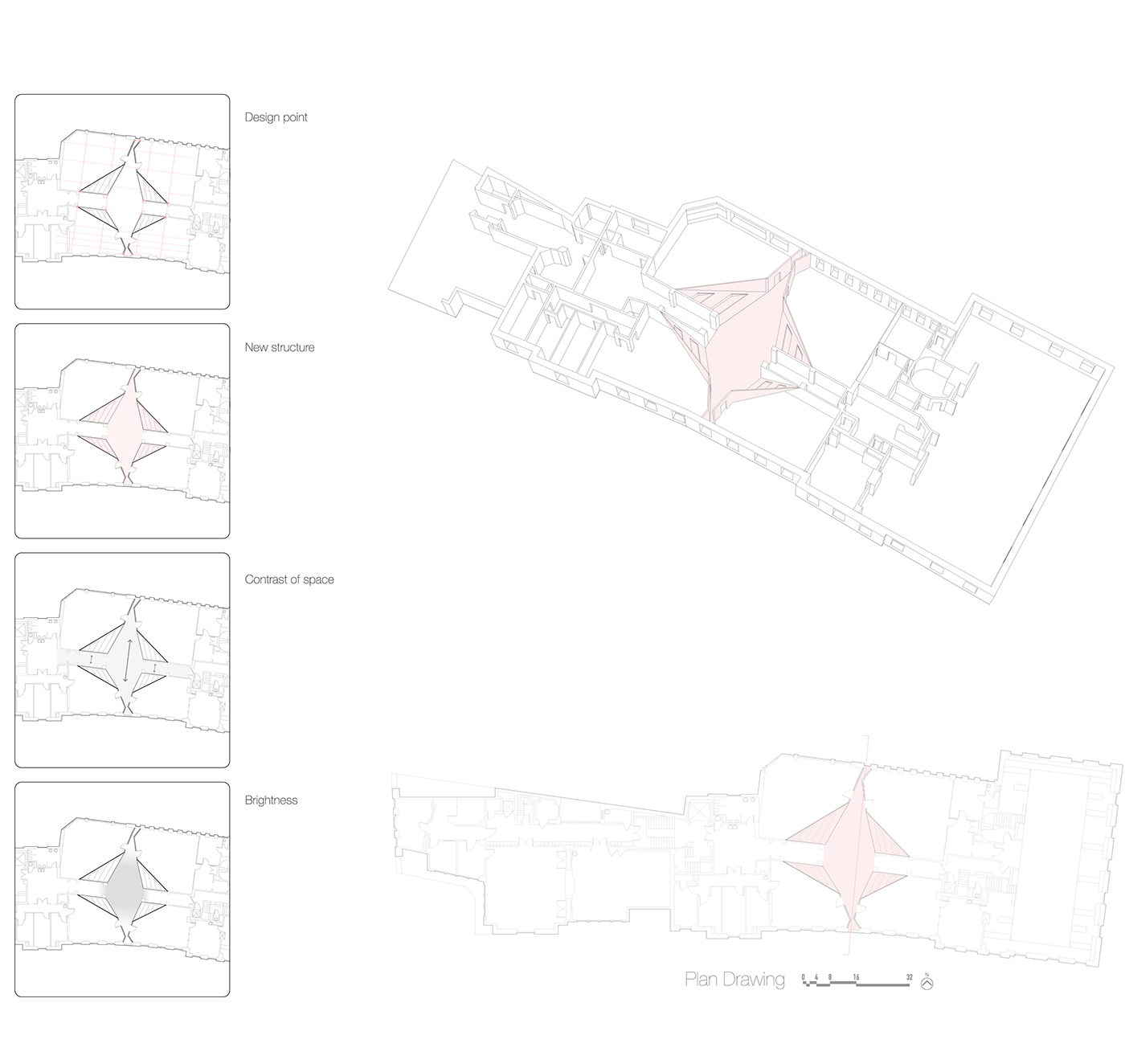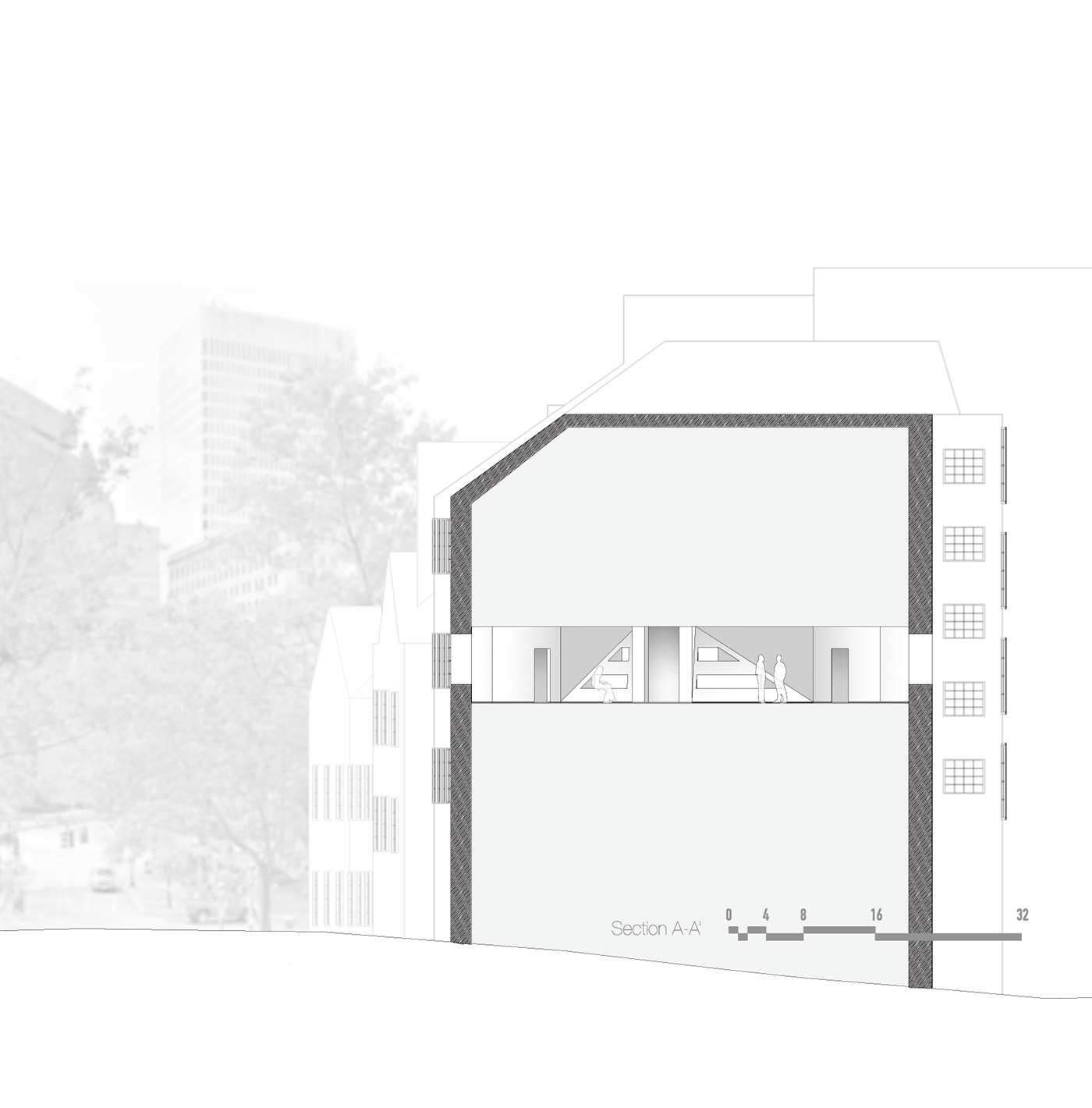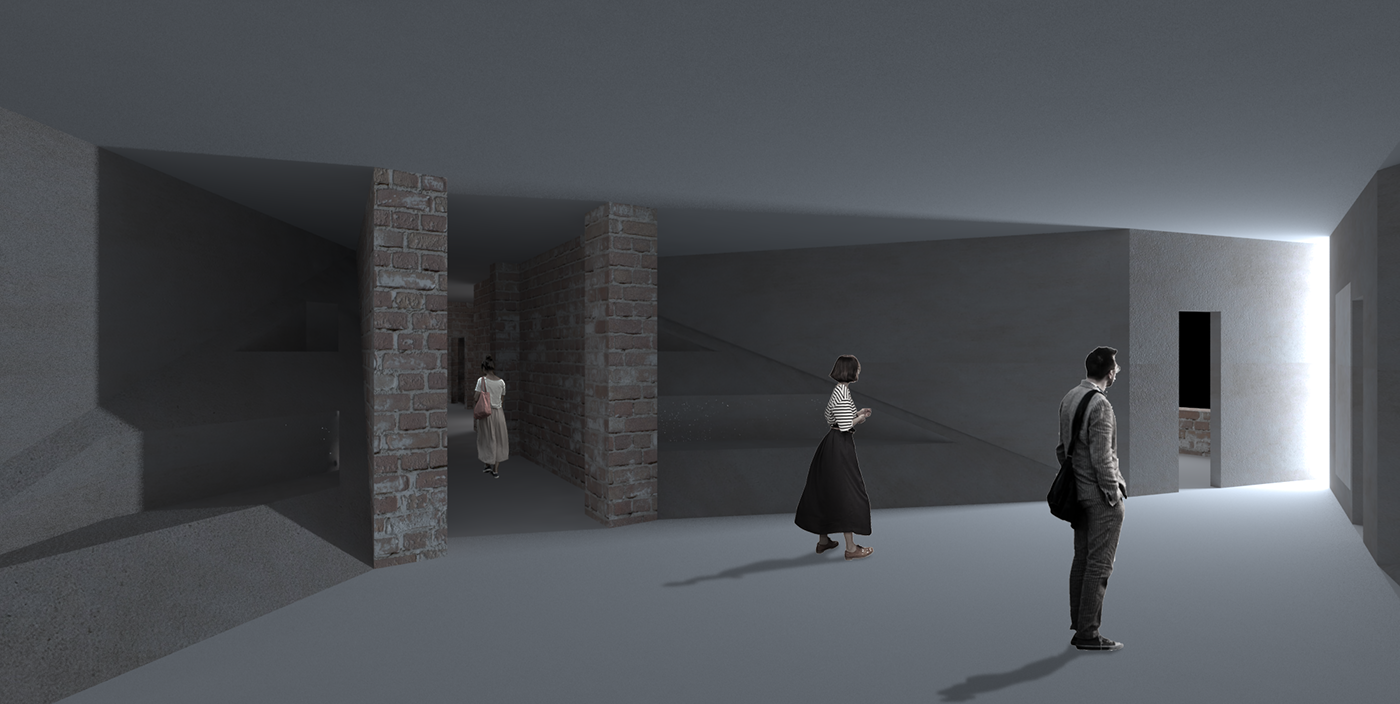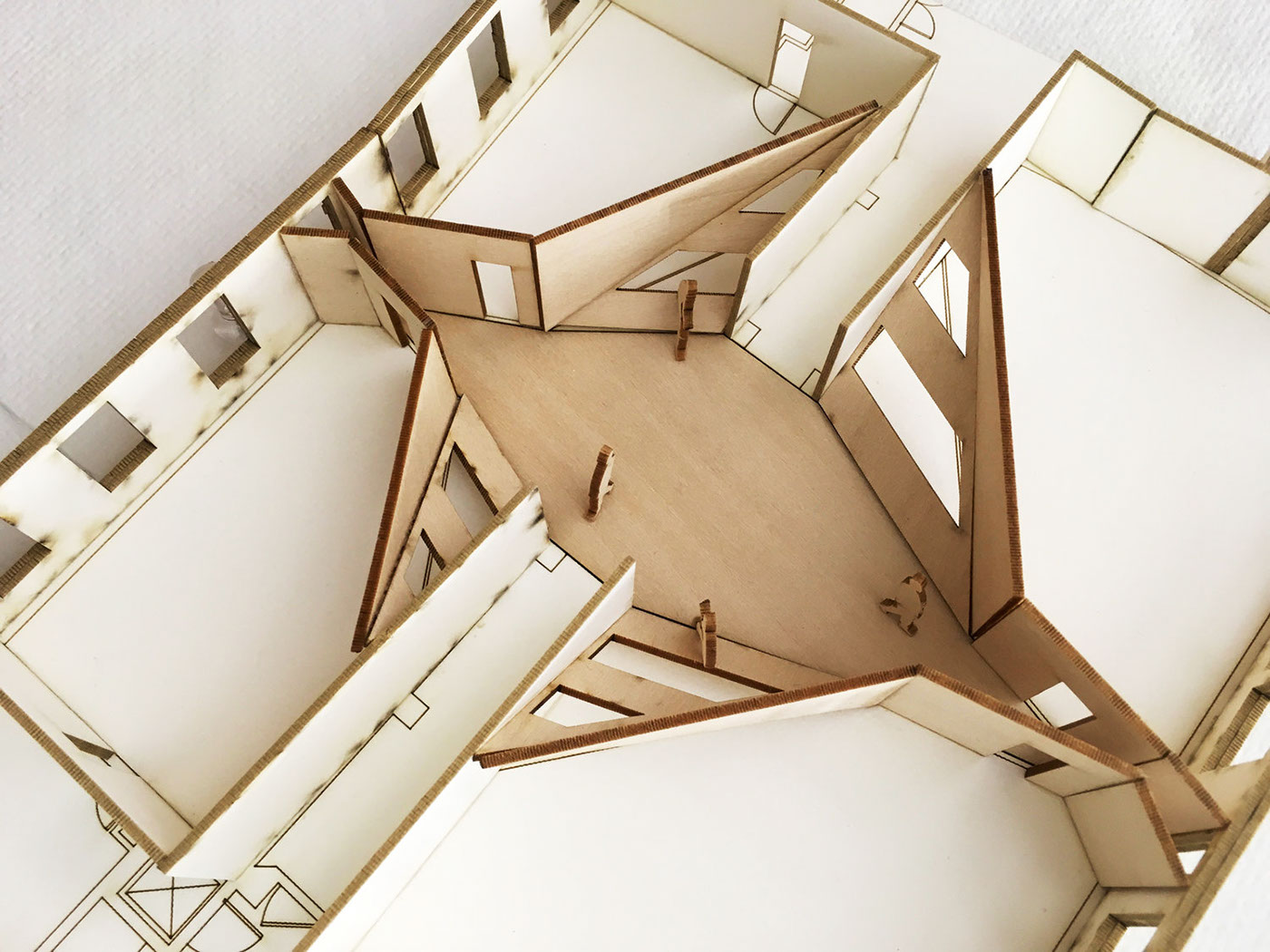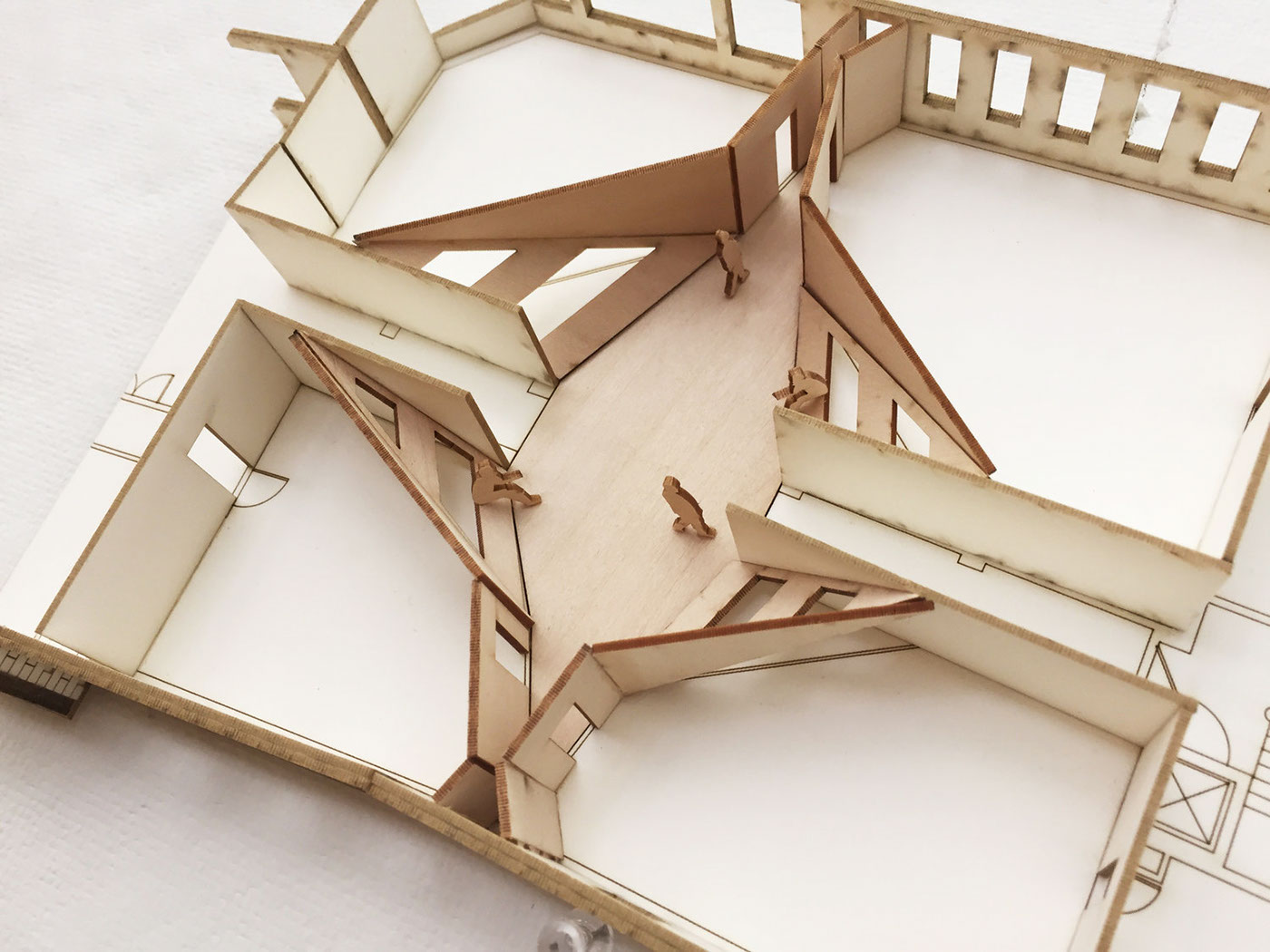
Emotions and Space
College Building, Providence
Creative Environment
2016
Understanding the relationship between emotions and space is the main point of my work. Emotions can have an influence on people’s activities, and space can also affect people’s emotions. Different functions and use for space like learning, sleeping, or social networking trigger different emotion at different places. On the contraty, emotions also trigger different use of space. For example, emotions such as sadness or sublimity have a positive influence on systematical learning activities. This is related to “depressive realism” which means that depressed people are more realistic and accurate (as cited in Bertels 2013). Knowing what spatial elements affect and provoke emotions in space and how to match emotions to a particular use of space are essential questions of the work. The 5th floor corridor of College building is placed in a straight line and is divided into five sections by spatial factors. Each section delivers different atmospheres to people and affects people’s emotions differently. The main factors which divide space and make these changes are brightness and size of space. Therefore, making spaces that arouse such emotions as sadness or sublimity will have a positive influence on learning. These emotions get intensified by the transformation of light, scale and materials (by dimming the light and enlarging the scale). In my study, I use the corridor as a space where people need to go through to reach their particular places, and I believe that the corridor can be the platform that affects people’s emotions at first hand. The amount of light and the contrast of larger space than human scale and small space are the main factors that I manipulated in order to intensify emotions, such as sadness or sublimity, because of the fact that using brightness and size of space are the main factors found in the existing condition.
